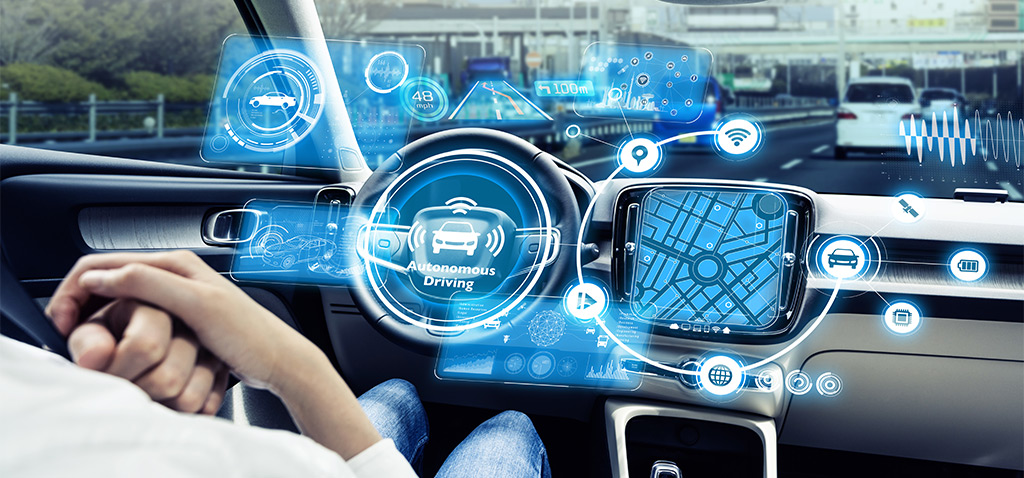- Services
Technology Capabilities
Technology Capabilities- Product Strategy & Experience DesignDefine software-driven value chains, create purposeful interactions, and develop new segments and offerings.
- Digital Business TransformationAdvance your digital transformation journey.
- Intelligence EngineeringLeverage data and AI to transform products, operations, and outcomes.
- Software Product EngineeringCreate high-value products faster with AI-powered and human-driven engineering.
- Technology ModernizationTackle technology modernization with approaches that reduce risk and maximize impact.
- Embedded Engineering & IT/OT TransformationDevelop embedded software and hardware. Build IoT and IT/OT solutions.
- Industries
- GlobalLogic VelocityAI
- Insights
BlogsDecember 16, 2024Gene LeybzonAccelerating Digital Transformation with Structured AI Outputs
This code produces the following output that can be imported into the candidate trackin...
 BlogsOctober 30, 2024Yuriy Yuzifovich
BlogsOctober 30, 2024Yuriy YuzifovichAccelerating Enterprise Value with AI
Discover how financial services integrations are transforming from standalone offerings...

- About Us
Press ReleaseGlobalLogicMarch 11, 2025GlobalLogic Launches VelocityAI to Harness the Power of AI, ...
VelocityAI combines advanced AI technologies with human expertise, helping businesses r...
 Press ReleaseGlobalLogicJanuary 10, 2025
Press ReleaseGlobalLogicJanuary 10, 2025GlobalLogic Announces Leadership Change: Srini Shankar Appointed ...
SANTA CLARA, Calif.–January 10, 2025– GlobalLogic Inc., a Hitachi Group Com...

- Careers
Published on December 2, 2021The most essential technology driving the future of transportation
View all articles Marek GalantManager, Sales EnablementShareRelated Content
Marek GalantManager, Sales EnablementShareRelated Content GlobalLogic25 June 2025
GlobalLogic25 June 2025 GlobalLogic25 June 2025View All Insights
GlobalLogic25 June 2025View All Insights GlobalLogic25 June 2025
GlobalLogic25 June 2025Let's start engineering impact together
GlobalLogic provides unique experience and expertise at the intersection of data, design, and engineering.
Get in touchAI GovernanceMLOpsMobilityThe transportation industry is facing multiple challenges in terms of offering safe and efficient products with low downtime, increased utilization, and lower duo carbon emissions. Businesses must also ensure that they are compliant with environmental regulations and numerous other transport regulations. They must develop their products in a balanced way, with social and environmental responsibility in mind. All of these challenges create a demand for specific technology solutions that are software-driven.
At GlobalLogic, we work on many projects for the transportation industry, with an extraordinary focus on road transport. Our clients are vehicle manufactures, parts suppliers, and fleet transportation companies. Based on our experience, we highlight the technologies that are currently impacting the transportation industry here.
Driver Safety Systems
Whether for drivers, passengers, or pedestrians, personal safety is central to the vehicle design process. Vehicle manufacturers focus a significant amount of their resources on minimizing human injuries or fatalities and providing drivers with safe, comfortable driving experiences through Advanced Driver Assistance Systems (ADAS).
The ADAS leverages various technologies and applications to help drivers safely drive and park, improving road safety. Let’s explore a hypothetical scenario that uses ADAS technology.
- The intelligent vehicle uses computer vision technologies such as Light Detection and Ranging (LIDAR), Radio Detection and Ranging (RADAR), and cameras to view its surroundings.
- Vehicle-to-everything (V2X) technology enables the vehicle to instantly communicate with surrounding objects, infrastructure, and other vehicles. It can exchange data about dangers on the road, incidents, or blocked highways, obtain data on optimal driving routes, and minimize collisions by identifying nearby objects.
- These exchanges are made lightning-fast through high-speed communication links – either via ethernet inside the vehicle or 5G cellular networks outside the vehicle – as well as high computing power from internal computers, and edge processing in the network or delivered on-demand from the cloud.
- The vehicle can learn through Machine Learning (ML) and act through Artificial Intelligence (AI) thanks to advanced decision algorithms. These capabilities help the vehicle make decisions based on the driver’s route, adjust speed as needed, and act quickly in dangerous situations.
Not only do computer vision and ADAS technologies help protect drivers from their external surroundings, but they can also protect drivers from themselves. At GlobalLogic, we have worked on multiple projects that leverage internal cameras to create driver monitoring systems.
These systems can detect a driver’s alertness and ability to respond to a road’s conditions appropriately, whether drowsy or even just distracted from eating, smoking, or talking on the phone. Some vehicles can even recognize their assigned driver and check their vital signs. Through computer vision, ADAS, AI, and ML, we are getting closer to achieving a genuinely autonomous ride for drivers and automated loading, unloading, and docking for fleet operators.
Transportation Regulations
Businesses across the transportation industry hold themselves to high compliance standards with safety regulations because of the far-reaching impacts of vehicles and infrastructure. For example, all new vehicles introduced to the market must provide proof of their safety on the road and their low pollution emissions, which we will discuss further in the next section.
Fleet operators must comply with mobility and transport requirements. One example is the EU Regulation 2014/165: Tachographs in Road Transport that states that fleet operations must install a tachograph device in vehicles to record driving times accurately and rest periods to avoid fatigue and ensure road safety. To accomplish this, fleet operators require both embedded and cloud software in compliance with their electronic tachographs and data analytics platforms.
Even tolling systems are subject to specific regulations such as ISO 17573-1:2019 Electronic fee collection, which requires transportation businesses to ensure that their digital vehicle identification systems and contactless payment systems are in compliance.
All these critical regulations mean that transportation software developers like GlobalLogic must ensure that software meets automotive standards like Automotive Software Performance Improvement and Capability determination (ASPICE) standards and principles of functional safety regulations like ISO26262/ASIL, as well as strict verification and validation procedures.
Vehicle Electrification
More and more automotive manufacturers are embracing electric vehicles for both the consumer and commercial marketplaces. Generally speaking, using an electric powertrain minimizes duo oxygen emissions by utilizing energy from renewable sources and storing it efficiently.
Electric vehicles rely on specific software and applications to better utilize power and manage energy storage. For example, GlobalLogic frequently works on battery management systems that help expand an electric vehicle’s range, achieve the best possible performance, and even recover energy during braking. On the other end, intelligent charging systems can communicate with a vehicle to optimize charging and provide drivers with complete transparency.
Manufacturers are also starting to use fuel cells powered by hydrogen instead of just drawing electricity from a battery. So, it is only a matter of time before commercial vehicles like buses, trains, and trucks become equipped with electric powertrains that use hydrogen fuel cells.
Software-Defined Vehicles
A vehicle as a source of data or software-defined vehicle offers many possibilities to optimize usage, assure durability, shorten downtimes, and increase productivity. For example, Tesla can continuously, remotely deploy software updates and introduce new features and user interfaces. Among our clients, we’ve found high demand for software that enables over-the-air update campaigns.
Software-defined vehicles also enable manufacturers to monitor a vehicle’s data to quickly respond to bugs or proactively avoid them. Processing this data is now even easier, thanks to automotive players adopting the cloud. With almost unlimited storage space and computing power, the cloud enables vehicles to analyze enormous amounts of information. As a result, we’ve seen cloud adoption, big data processing, and AI help streamline telematics applications and other transportation services among our clients.
For fleet operators, software platforms can help them manage entire fleets, process log driving, dispatch information, and even provide predictive maintenance support. AI is a powerful tool that can help fleet operators:
- Analyze fleet utilization
- Automate road freight loads dispatching
- Analyze drivers’ behaviors and driving styles
- Monitor petrol usage and vehicle maintenance costs
- Optimize business risks
- Manage insurance, tolling, or dispatching policies
In addition, artificial intelligence helps streamline problems with under-utilized trucks by creating semi-automated dispatching plans or solving inefficient routing. GlobalLogic works on numerous projects located in the private and public clouds where advanced analytics, machine learning, and intelligence algorithms are in backend applications. For instance, we delivered a ridesharing platform for road freight for an innovative startup company.
We have developed fleet management and telematics platforms for vehicle data logging and remote diagnostics for other clients, as well. GlobalLogic is engaged in numerous marketplace portal projects where companies can search for tracks, parts, or services – and where intelligent algorithms support their choices. Regardless of the type of service, modern telematics platforms based on the cloud system as a service (SaaS) offer high scalability, enable real-time processing, and deliver interactive analytics with the highest level of security and reliability due to AI and ML.
Digital Transformation
Businesses across the transportation ecosystem, such as manufacturers, dealers, repair shops, transportation service providers, and aftermarket players, are leveraging digital accelerators like the Internet of Things (IoT) solutions and Digital Twins to streamline their daily operations. For example, Digital Twins creates a digital version of a physical item that users can virtually manipulate and analyze in various scenarios to generate data to see how it would act in real life. Gaining such insights without investing in a physical setup provides significant cost and time savings.
We have created solution accelerators to help dealerships and repair shops quickly adopt digital transformation through contactless payments, appointment booking, remanufactured parts workflows, automated warehousing, and distribution solutions. Additionally, we’ve developed a vehicle cockpit accelerator that enables vehicle manufacturers to rapidly and cost-effectively create a customizable in-vehicle infotainment (IVI) system. As mentioned earlier, vehicles are becoming more reliant on software, and powerful, engaging IVI systems are no longer a nice-to-have feature.
Another trend we’re seeing is the use of AI in knowledge transfer and vehicle maintenance. For example, we’ve worked with vehicle manufacturers to create virtual technical training tools that enable technicians to use virtual reality or augmented reality to get remote support. We’ve also built AI tools that can identify damaged parts based on their images.
In Conclusion
Automotive software has become the driving force behind the transportation industry, and artificial intelligence is at the forefront of this movement. From automotive original equipment manufacturers (OEM) to fleet operators, they all utilize AI and supporting technologies such as machine learning, IoT, big data, and analytics. These technological capabilities help create driving and transportation solutions that are just as engaging for drivers as they are safe and reliable.
